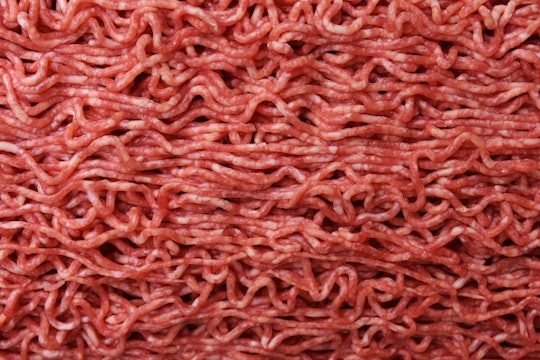

Produced in partnership with New Harvest
Here's everything you need to know to grow your own hamburgers
Cellular agriculture techniques are young but rapidly advancing
Only in 1855 did we discover that every cell in the world stemmed from another cell. For decades after, researchers searched for methods to grow cells outside a living organism. The first time cells were successfully grown outside a body was in 1907 using frog embryo nerve fibers. In 1916, new culturing methods improved the yield and quality of cells grown separate from an organism.
Today, researchers are trying to grow animal muscle cells outside of the animals they come from. This practice, called cellular agriculture, is still in its early phases but is advancing rapidly.
Instructing cells to grow into edible muscle outside of a living organism requires specialized techniques and raw materials that are both food safe and sustainable. It also requires lots of trial and error. This process can roughly be broken down into four major steps:
- cell isolation, selection and growth
- structuring
- muscle formation
- post-culture and finishing

Allan Lasser
Obtaining the cells
Muscle tissue is composed of several types of cells, proteins, fats, polysaccharides and water. The production of cultured meat starts by obtaining some of those cells, including muscle fibers and stem cells. A small and pain-free biopsy with local anesthesia is performed on a living animal. This small piece of tissue is cut into even smaller pieces and digested with enzymes, similar to how food is digested in your stomach, to break the tissue into individual cells.
Researchers are still refining which cell types to grow and include in cultured meat. Not all types present in muscle might be needed. There are two reasons this isn't straightforward: cell plasticity and differentiation potential; and ii) meat formulation being made.
Many kinds of cells such as nerve cells, endothelial cells (from inside blood vessels), myocytes (the cells that make up muscle fibers), adipocytes (fat cells), fibroblasts (cells from within the muscle), tenocytes (from the tendon), and stem cells are present in meat, and the necessity for each must be weighed like ingredients in a recipe. Each type contributes differently to the nutrition and texture of the meat. One might reasonably expect at least myocytes to be included to provide the muscle-y, fiber-like texture that is characteristic of meat, along with adipocytes to add the flavor, texture, and juiciness of fat.
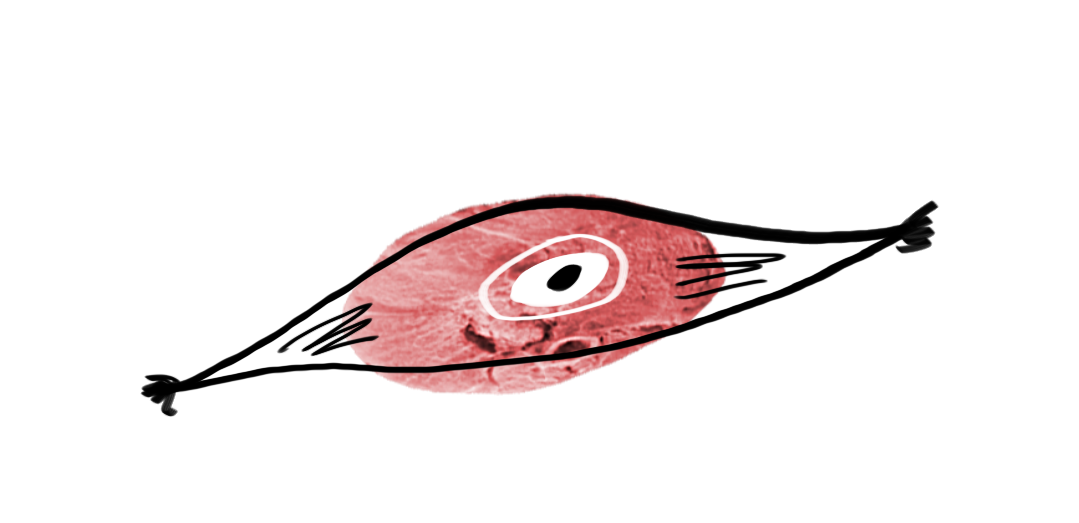
Allan Lasser
Adult somatic cells are cells obtained directly from a biopsy. They are differentiated, which means they are more or less committed to their fate. So, if I sampled a muscle cell and grew it in my lab, it will produce more muscle cells and not, say, liver cells. These cells already display many of the characteristics of the muscle itself. However, to obtain pure adult somatic cells for each type listed above to grow in the lab may be an exhaustive and expensive process. Moreover, adult somatic cells grow slowly and are finicky to maintain.
Stem cells are cells whose identity is not yet established and have the potential to differentiate into specialized cells. They can become your adult somatic cells, your adipocytes and myoblasts and whatever else is needed, and can be a better option for growing cultured meat than adult somatic cells. There are also different kinds of stem cells that are distinguished by their potency and source. The more "potent" a stem cell is, the greater number of different cells it can turn into. For example, a newly fertilized zygote is "totipotent": it can turn into any other kind of cell in the body. The stem cells I grow in my lab are myosattelite (from within the muscle), adipose derived stem cells (from within the fat) and dedifferentiated adipose tissue cells (from the fat). While myosattelite cells are committed to being myogenic cells (they will only turn into and produce muscle cells), the others can differentiate into multiple types of cells and are more abundantly collected. This cell yield is an important factor to minimize the number and size of biopsies done. The yield and health of stem cells -- they grow faster and will produce for longer -- make them a better option over adult somatic cells. But, the specific kinds of stem cells that are best for different applications is still being worked out.
Cultivating the cells: bioreactors and culture media
To industrialize cultured meat huge cell production capability is necessary, far beyond that that an academic lab can achieve. That can be achieved with large bioreactors, essentially huge vats filled with a nutrient rich liquid called culture media. The culture media is what feeds the cells with salts, vitamins, proteins, and sugars that are necessary to grow.
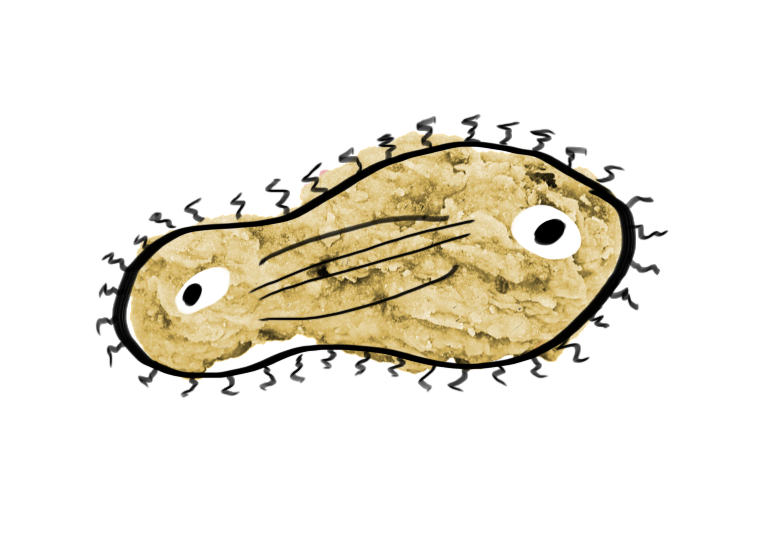
Allan Lasser
The projected numbers are exciting: in just 2 months, 50,000 tons of pork cells could be grown per bioreactor, by using starter cells from 10 pigs. Estimates show that those ten pigs could provide about 0.8 tons of meat if they had been slaughtered. Another estimate suggested that one continuously running 25,000L bioreactor could provide meat for approximately 10,000 people.
There are different types of bioreactors but the most common are vessel or tank-shaped. They can look like a beer fermentor. Cells are immersed in culture media and kept under constant agitation to avoid sedimentation (pilling up at the bottom because they don't swim). Simultaneously, conditions like pH, CO2 and O2 content, and agitation speed are monitored. The cells may self-assemble into small aggregates or be attached to small biodegradable particles called cell micro-carriers that are added to the media. These allow the cells to maximize surface area, and thus space to grow, available to them.
Since the first attempt to grow edible muscle, the composition of the media has been a point of major concern. One sticking point has been the use of fetal bovine serum (FBS). FBS is a mix of proteins, vitamins, and a variety of other factors that, right now, are essential for growing cells in vitro. It is often harvested from the blood of fetuses present in pregnant cows after they are slaughtered. Although FBS is considered a by-product of the beef industry, it is a major source of variability, not to mention safety and ethical concerns. To make industrial-scale cultured meat a reality, new media formulations that are FBS-free are needed.
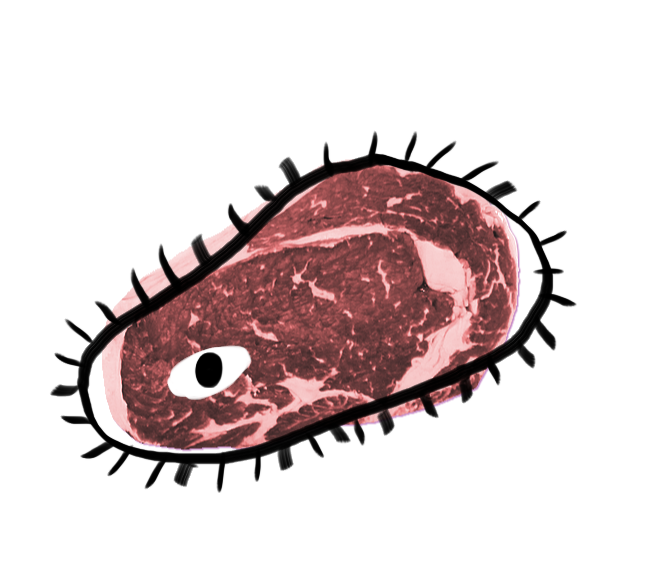
Allan Lasser
About 800,000 liters of FBS are obtained annually from 2 million bovine fetuses. Again, FBS is not desirable but it is needed. It contains growth factors and many other compounds essential for cell survival, the sorts of things that cells would normally get from the body they inhabit. Therefore, producers are looking for alternatives like synthetic and chemically-defined sera (serum where every ingredient is precisely known and quantified), or media that is serum-free altogether, like using serum made from plant derivatives.
FBS also significantly increases the production cost. Half a liter of certified FBS can cost around $600 and usually represents 10% of the cultured media volume. To fill one 25,000L bioreactor, 2500 L of FBS would be needed. So, to feed 10,000 people every month with cultured meat, the FBS alone would cost $1,500,000.
Structuring the cells: scaffolds
The cultured meats hitting the market first will be unstructured meats. This means they will look like common processed meats, like ground beef, where the typical muscle fiber seen in things like steak or chicken is not apparent. To achieve the highly organised form of a steak or a chicken breast, the use of a structure to grow on is needed. Those three-dimensional structures are known as scaffolds. Imagine the 3-dimensional outline of a steak which cells grow on and fill in, like a newly built house. These scaffolds will be degraded by the cells during culturing, or removed. They can also simply be eaten in some cases. Example of edible scaffolds are made from plant leaves or alginate derived from brown algae, mushrooms, or other foods.
Not every type of possible scaffold may be immediately suitable because the ways the cells interact with them have to be optimized. Cell survival and behavior are dependent on their interaction with the surroundings, in much the same way cells within you interact with the rest of your body - but in this case it's the scaffold and/or the medium they are growing in. It is by interacting with the surrounding that signals (chemical, electric, mechanical) are naturally sent into the cells so they know what to do -- how to grow and proliferate. Cultured meat engineers are looking for scaffolds that are both edible, or removable, and allow for these signals to be transmitted.
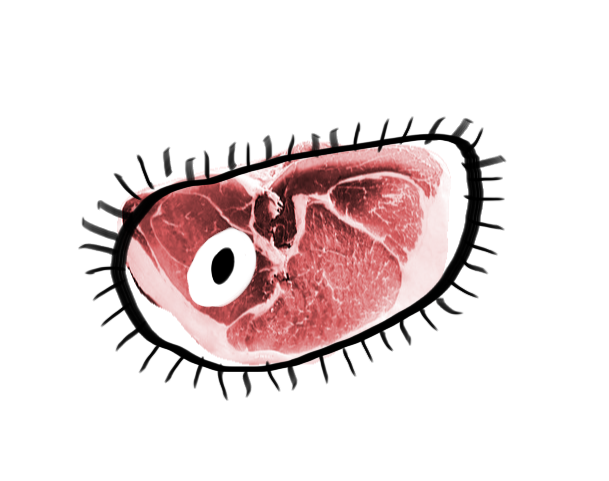
There are two methods to structuring cells using scaffolds. The scaffolds can be previously prepared and cells added on to them. Alternatively, cells can be mixed with the raw ingredients for a scaffold, and the two allowed to build the meat together. In the first case, cells are seeded onto the sterile scaffolds. In the second, very small units made of scaffold and cells are assembled and positioned in a controlled manner. For example, a 3D bioprinter or a 3D food printer, dispenses a gel-like mixture containing a scaffold/cell mixture or only cells, layer-by-layer, following a computer assisted design. Imagine a high-tech pastry-bag. With this technology the type and content of cells could potentially be tuned at the muscle fiber level.
Muscle genesis
After the house is built, it is time for the cells do their job: become the muscle, become the fat, or become something else, depending on the meat recipe. This is the period where the scaffold with cells growing on it maintains conditions mimicking an animal body. Nourishing the cells with nutrients, bioactive proteins, and exercise will let them known that it is time to become muscle. This step of muscle tissue formation and maturation is known as myogenesis. The stem cells are differentiated into myoblasts, for instance, by delivering them the right bioactive growth factors, biological signals that direct stem cells to start becoming muscle cells. The myoblasts then naturally fuse together into long fibers called myocytes by reducing the presence of certain protein - e.g., "mitogenic growth factors" that would instruct them to grow and divide instead of forming muscle.
Simultaneously providing biological, mechanical, and electrical cues is important for closely mimicking the environment of an animal body, and for improving muscle formation or maturation. However, the timing and characteristics of those stimuli is still being studied. For instance, there is a consensus that mechanical stretching promotes myoblasts growth, but it also may inhibit muscle maturation. On the other hand, electrical stimuli can promote muscle fibers maturation. Electric cell stimulation is not weird as it might sound. Functional electric stimulation is used for human injury rehabilitation , and cell cultures can be electrically stimulated or "exercised" to promote cultured muscle growth and maturation in a similar way.
Finishing
A last step might involve processing or finishing the cultured meat so that it is ready to consume. As an example, the meats may be processed to create unstructured cultured meat products (e.g. chorizo, sausage, nuggets, burgers).
But, there are still many unknowns about how cultured meat will behave after being taken out of culture. Will post mortem rigor formation happen? If so, what are the best conditions to store the meat before consumption? Is the scaffold cohesive and robust enough to support storage and transportation? How can this meat be cooked? Many question have yet to be answered.
